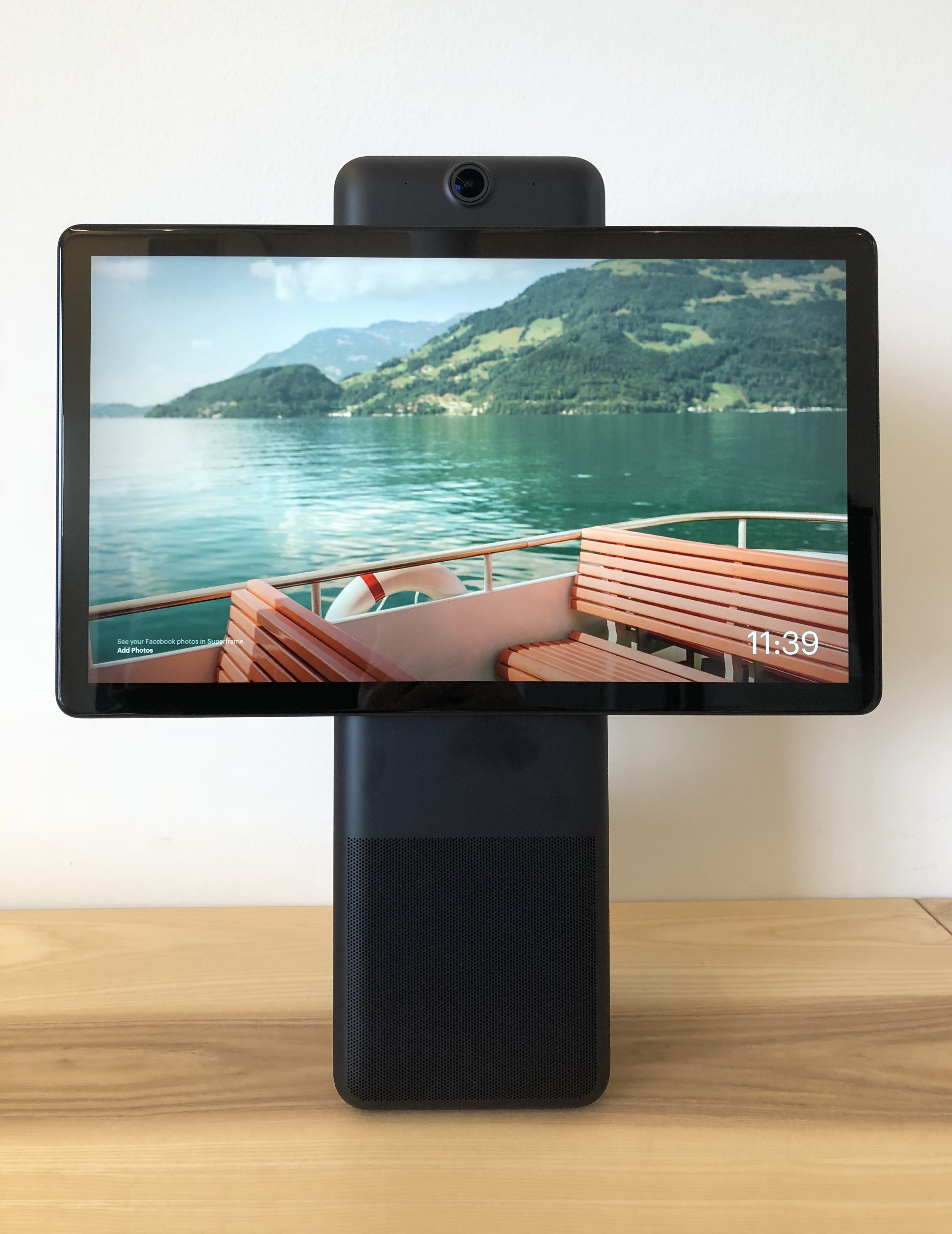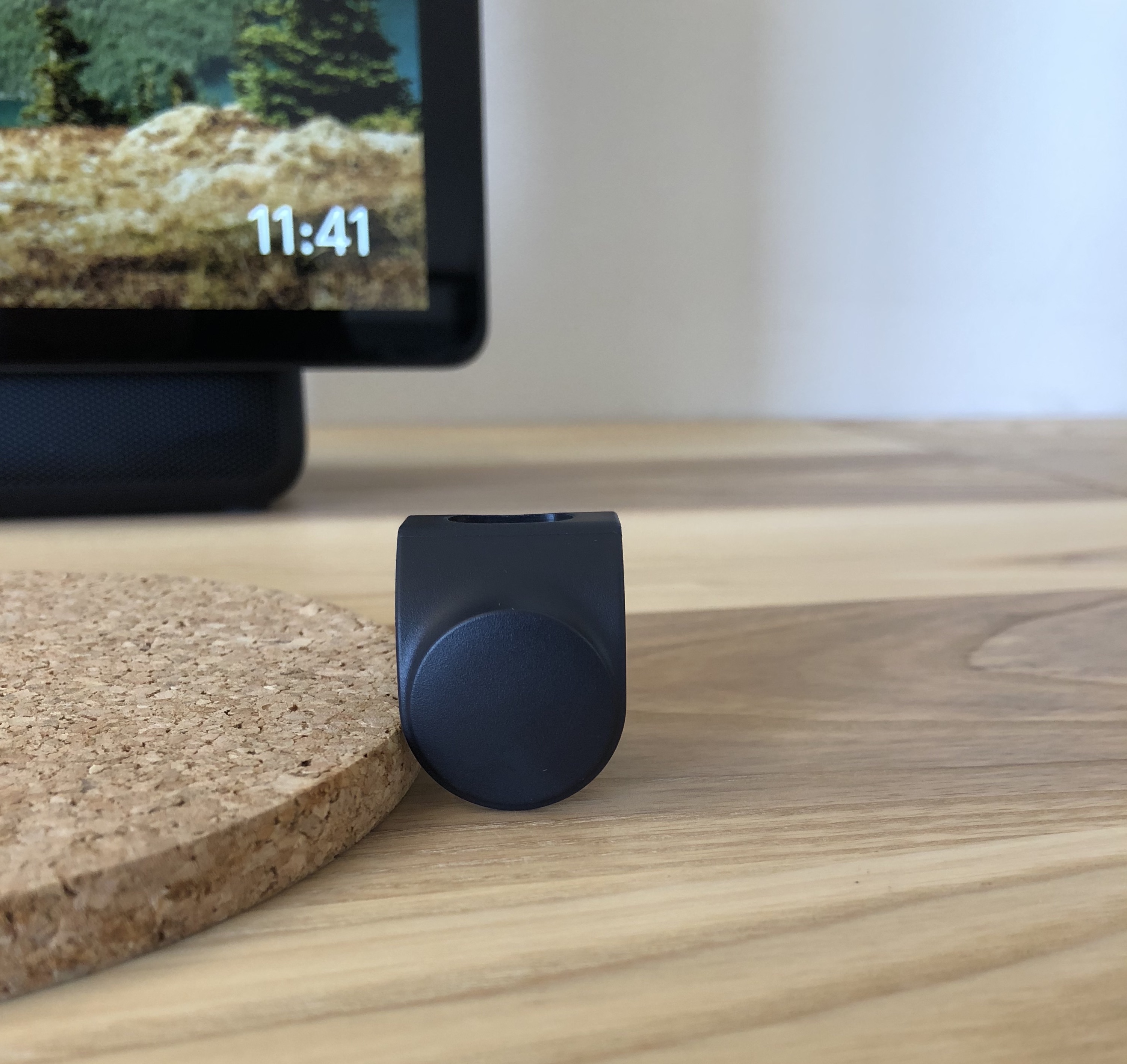Earlier this month, the first ever Facebook-branded hardware device shipped. It’s a smart, hands-free video calling device with Alexa built-in called Portal. It was built with the intention of bringing friends and families closer together when they are apart. Though not under the Oculus brand, Portal’s slogan “If you can’t be there, feel there” represents another step in Facebook’s initiative to use the power of next-generation technologies like virtual and augmented reality to connect people even when they’re not physically present in the same place. Despite our criticism of Facebook, we believe the focus of this product is inherently good and that this device does a great job of carrying out that purpose. That said, we have reservations about the utility and value of the product itself.

First Impressions
Hardware – The build quality of the Portal+ is excellent. It feels like what we’ve come to expect from Apple, even down to the packaging. The screen looks like an iPad on a hinge that is surprisingly solid. It does not feel like the first iteration of a product, much less the first product from a company altogether.
Camera – The camera is impressive in its ability to stay focused on and follow one person while they move, so video calling becomes more flexible than holding your smartphone awkwardly in front of your face or parking yourself at a desk with a laptop. We also enjoyed the AR filters you could add during conversations and found them to be on par with or better than what’s available on Snapchat or FaceTime. Overall, the video chatting experience was really compelling.
Sound – The Portal+ sounds great on a video call, but for playing music (another one of its primary use cases based on available apps) it sounds just okay – falling short of a HomePod or Sonos One.
Size – The Portal+ is surprisingly large. While the standard Portal (10.1″ display) can fit comfortably on a counter or coffee table, the Portal+ (15.6″ display) is so large that we didn’t quite know where to put it. Similar in size to a computer monitor, it needs a considerable amount of space, but you want it somewhere you can conveniently make video calls. However, the unique ability for the camera to follow you makes its position less important.
Voice Control – You interact with the device using your voice by saying both, “Hey Portal” and “Alexa,” and the two assistants have different functionality. The Alexa integration, while we haven’t fully experimented with it, has some unique aspects with the 15.6″ display. The native assistant is only able to control things like changing device settings, making calls, or opening apps. Bottom line – if you’re looking for a smart speaker, there are better options, but the voice integration is additive.
Privacy Concerns?
The Portal was met with some understandable backlash about “allowing Mark Zuckerberg to put a camera and microphone in your home.” The Portal team was clearly aware of this stigma and even included a handy plastic cover for the camera – an interesting hedge on their part. Muting the mic and turning off the camera is also as easy as tapping the center of the touch volume rocker on top of the device.

What We Like
- Build quality – reminds you of an Apple device
- Unique camera feature that allows you to make video calls while not being planted in front of a device
- Built around purpose of connecting friends and family
What We Don’t Like
- Altogether limited functionality (only 8 apps available) and few use cases
- Two voice assistants with two different wake words and capabilities adds friction
- Unclear where to put such a large device
- No web browser
- Only able to call through Facebook
- Poor sound for music (fine for video calling)
Conclusion
The Portal+ is a quality smart home device, but it has limited use cases. It’s a compelling tool for avid video chatters, and its purpose of using tech to facilitate human connection is apparent in its design. We enjoyed using it for video calls, but other activities like listening to music, watching YouTube videos, or calling up recipes are best done on other devices.
Disclaimer: We actively write about the themes in which we invest or may invest: virtual reality, augmented reality, artificial intelligence, and robotics. From time to time, we may write about companies that are in our portfolio. As managers of the portfolio, we may earn carried interest, management fees or other compensation from such portfolio. Content on this site including opinions on specific themes in technology, market estimates, and estimates and commentary regarding publicly traded or private companies is not intended for use in making any investment decisions and provided solely for informational purposes. We hold no obligation to update any of our projections and the content on this site should not be relied upon. We express no warranties about any estimates or opinions we make.
